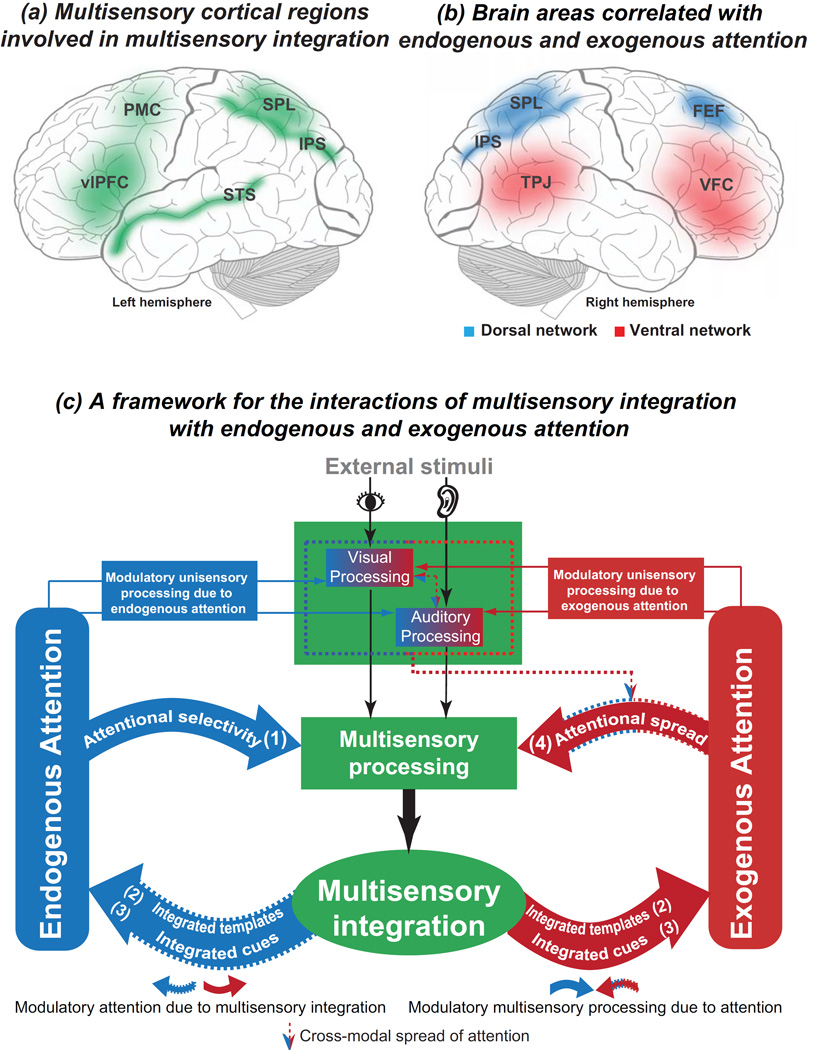Figure 1.
(a) Multisensory cortical regions (green) that are involved in multisensory integration. SPL = superior parietal lobule; IPS = intraparietal sulcus; STS = superior temporal sulcus; vlPFC = ventrolateral prefrontal cortex; PMC = premotor cortex. (b) Brain areas that are correlated with endogenous and exogenous attention. SPL = superior parietal lobule; IPS = intraparietal sulcus; FEF = frontal eye field; TPJ = temporal-parietal junction; VFC = ventral frontal cortex. Endogenous attention is associated with the dorsal attention network (blue), while exogenous attention is associated with the ventral attention network (red) (Fox et al., 2006). The dorsal attention network is bilateral. It is involved in voluntary (top-down) orienting and exhibits increases in activity after the presentation of cues that indicate where, when, or to what subjects should direct their attention. The ventral attention network is right lateralized. It is involved in involuntary (stimulus-driven) orienting and exhibits increases in activity after the presentation of salient targets, particularly when they appear in unexpected locations (Chica et al., 2013; Fox et al., 2006). (c) A framework for the interactions of multisensory integration with endogenous and exogenous attention. External stimuli from sensory organs can be integrated at multiple multisensory processing levels (Giard and Peronnet, 1999; Talsma and Woldorff, 2005). Multisensory integration is elicited as a consequence of the multiple phases of multisensory processing. Although these multisensory processes are thought to be automatic, attention influences not only unimodal processing but also multisensory processing in both an endogenous and exogenous manner. Endogenous attention can modulate multisensory processing via endogenous attentional selectivity [(1) Attentional selectivity]. This modulatory effect determines the extent to which simultaneously presented stimuli from different modalities can be integrated (see Figure 2 & Table 1). Furthermore, the integrated multisensory stimuli can be represented in multisensory templates that are stored in the brain. These multisensory templates exert top-down control over contingent attentional capture [(2) Integrated templates]. Due to their increased salience relative to unimodal cues, integrated multisensory cues can influence the exogenous orienting of spatial attention even under quite complex circumstances or can improve visual search efficiency by increasing target sensitivity [(3) Integrated cues]. Finally, endogenous attention can spread from one modality to another in an exogenous manner such that the stimuli of the unattended modality come to be “attended” [(4) Attentional spread].

